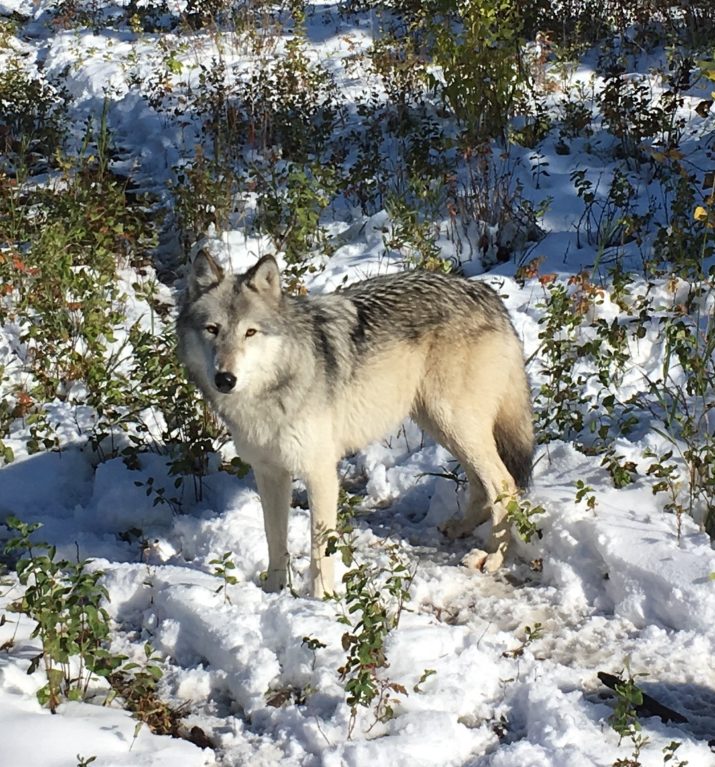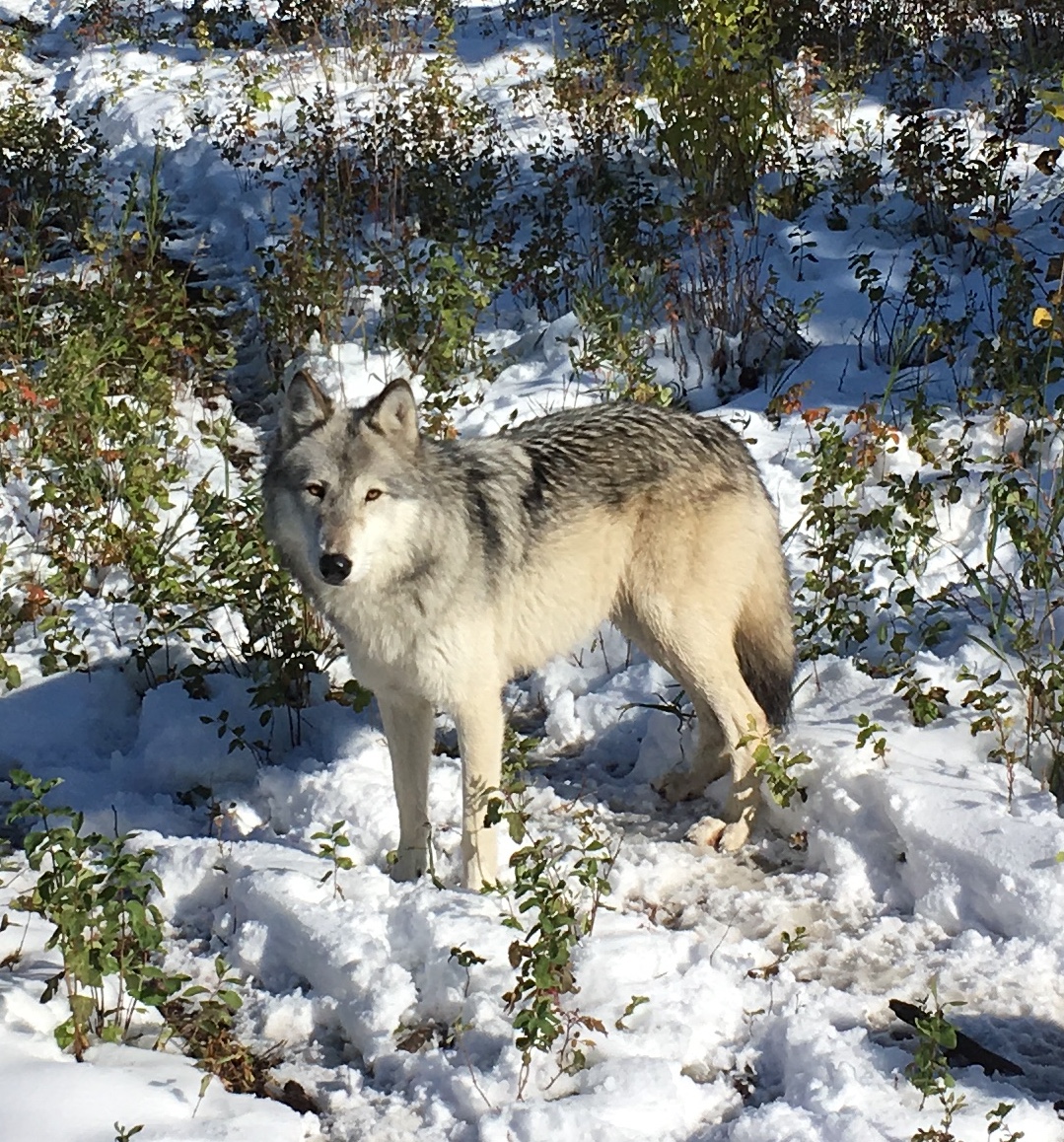
The Future of European Studies in Canada: What the “Great Outdoors” Can Teach Us through Experiential Place-Based Learning

This is part of our special feature, Imagining, Thinking, and Teaching Europe.
The classroom of the great outdoors has more knowledge available in it than a library of books. (Hensley, 2011, p. 96)
Although scholars outside the humanities tend to think of European Studies as disciplines housed primarily in the political and social sciences, language and cultural studies programs make important contributions to this field. “European Studies,” in fact, is a rarely used term here in Canada for language and cultural study programs such as Spanish, Italian, Russian, Ukrainian, and German, as these tend to focus on geographical and cultural areas outside of Europe, too, where these languages are spoken, and French, of course, is one of the official languages of our country and thus often falls under the rubric of Francophone studies. However, cultural studies programs at many Canadian universities offer courses on European literature, film, and history, and language programs across the country have successfully established long- and short-term exchange opportunities in Europe for their students. While such study abroad programs have a long tradition—the Canadian Summer School in Germany, for instance, was established in 1973—language and cultural studies programs also lend themselves well to local immersion events.
Can local field trips enrich language and cultural studies programs? The answer is clearly yes—because connecting with the surrounding land and its flora, fauna, and history, offers valuable experiential learning opportunities that are at the heart of the environmental stewardship our planet so desperately needs. Language and cultural studies are rarely seen as subjects that focus on the environment, and like many other disciplines in the humanities, they have often faced an image-problem in Canada. Doubtlessly, many of our graduates have heard the question “But what are you going to do with a degree in German/Italian/Russian?” more than once, usually posed with critically raised eyebrows. Yet those who lament the fact that such degrees do not directly lead to clearly defined career paths miss the point: these programs teach critical thinking and research skills in demand in many different professions—and, equally important, they teach intercultural awareness and communication skills that will be crucial to address environmental degradation. Responding to climate change, for instance, requires international cooperation—and that means languages, and knowledge of other cultures, are valuable assets.
To make sure, however, that our graduates are indeed optimally prepared for the future and for confronting the daunting problems the planet faces, it seems necessary to re-think what we teach, and how we do so, and why. I would argue that experiential learning, especially as it relates to the natural environment, can richly supplement what we do in the classroom, and it can also create valuable connections across the disciplines. This fits well into the larger move toward more interdisciplinarity that has recently led to the creation of consolidated large units out of the formerly separate small departments teaching Romance, Germanic, or Slavic culture and language courses at various Canadian universities.[1]The University of Calgary―a large, research-focused institution in Southwestern Canada―is the latest to have created a School of Languages, Linguistics, Literatures, and Cultures, an amalgamation of the former separate departments of Linguistics, Germanic & East Asian Studies, and French, Italian, and Spanish. As the numbers of majors in some of the individual programs—among them Italian, Russian, and German—are low, leading to the suspension of these three Bachelor of Arts degrees, the School is currently in the process of creating a consolidated major that will be more viable in terms of enrollment. Simultaneously, it is introducing various certificate options that will hopefully attract students from faculties across campus. The times thus seem uncertain for European Studies in Canada.[2] The political climate in the province of Alberta, moreover, which introduced a new performance-based funding model for postsecondary institutions that assesses students’ employability and financial success after graduation, is often seen as hostile to the humanities in general and language and cultural studies programs in particular. Yet, despite these challenges, there is tremendous opportunity for European Studies, and the University of Calgary’s various institutional strategies addressing sustainability, teaching and learning, internationalization, indigenization, and wellness, offer an exciting framework for trying new things in language and cultural studies, in particular if these various goals are seen as profoundly interconnected.
One of these new initiatives was a German Immersion outing that included a guided tour of a Wolfdog Sanctuary west of Calgary in the spring of 2020. The event, open to exchange students from Germany and Austria and to local students taking German courses, was framed as a field trip that aims to raise awareness of place, teach students about nature―including animals and their uses by humans―and create a sense of community for local and international students. I hope to organize such field trips on an annual basis, because love of the wild, which is fundamental to environmental stewardship, is difficult to teach out of books and inside a traditional classroom. In what follows, I will outline why instilling a sense of awe, wonder, and reverence—terms rarely used in course outlines or program outcomes that commonly stress students’ measurable skills and knowledge—is a crucial aspect of enriching the quality and breadth of learning in order to enable students to become confident global citizens engaged in building a sustainable future.
Field trips: Nathan Hensley’s Wild Curriculum as theoretical framework
I view field trips not as isolated special events but necessary components of a holistic, ecological curriculum that aims to overcome the alienating disconnectedness Hensley (2011) attributes to an efficiency-based curriculum driven by a mechanistic worldview and economic concerns. Drawing on an unpublished dissertation by R.L. Good (1998), Hensley argues that postsecondary institutions educate students in “disconnectedness—subject from subject,…, the mind from the body, the heart or ethics from action, humans from the natural world, and individuals from the collective group” (Good quoted in Hensley, 2011, 33). While Hensley’s inspiring book on Curriculum Studies Gone Wild concerns US-American education, his approach is highly relevant for the Canadian context as well. I draw on his insights into Bioregional Education and the Scholarship of Sustainability to establish a theoretical framework for the German Immersion field trip as a holistic experiential learning opportunity.
Experiential outdoor learning about nature is powerful: it engages all senses and leads to memorable experiences that can have a lasting impact on students. Hensley often couches encounters with “wildness” in the language of the sublime: he refers to his “deep reverential sense of awe” when first visiting Sequoia National Park in Northern California (12), and elsewhere, he uses terms such as “sanctity” (17) to describe the profoundly spiritual aspect of experiencing nature. Interestingly, he is not alone: other researchers also emphasize wonder and awe (Pike, 2017), or the “joy” and “inner freedom” encounters with the wild inspire (Glaser, 2010, 71). Offering our students opportunity for such encounters, I would argue, inspires environmental stewardship on the individual and collective level while also promoting wellness through authenticity and integrity.
Students’—and faculty’s—wellness has only very recently become a factor in course design. The University of Calgary started offering resources and workshops on the topic, and instructors are just beginning to incorporate wellness strategies into their teaching. Field trips, I would argue, are a highly effective method to boost wellness and thereby balance the intense demands our students face. At Canadian Universities, students feel relentlessly pressured to meet learning outcomes and consistently perform well while paying ever-increasing tuition fees. Understandably, many are extremely concerned about their grade point average. Students who are preoccupied with “getting that grade,” however, are unlikely to question their own values or appreciate the impact their own lifestyle and life choices have on the environment. They are often focused on studying in hopes of getting an A, without reflecting on what they are learning or why this knowledge or skill set is important. They also are likely to view education as a temporary means to an end—namely, employment and financial success following graduation—rather than a life-long journey. Students can thus become trapped in a mindset that favors material wealth over everything else and that views economic concerns as separate from, and often contradictory to, protecting the environment, instead of realizing that all human activity is “contained within the biosphere and ultimately dependent upon the environment as the source of all energy and matter” (Reynolds, 2010, 24). Students with a highly competitive “me first” attitude, I believe, are not well prepared to tackle environmental degradation. As instructors, while academically rigorous, we must allow students to see the bigger picture and reflect on their education as more than just preparation for various professions or graduate school.
Universities, therefore, have a responsibility to foster not just intellectual rigor and enable students to become researchers, writers, translators, or professors equipped with the knowledge and skills that allow them to tackle large problems. Universities also have an obligation to encourage the development of ethical mindsets by offering an education that is holistic and allows students to grow as people, as individuals who recognize their connections to and interconnectedness with the human and non-human world around them. This view is certainly contentious, and some might object that universities must promote research and confer knowledge in ways that strive to be impartial and unbiased. I agree that we need to leave it to our students to find their own voice. However, we have an obligation to allow them to critically reflect on their own place in this world and their connection to the land that surrounds them. Hensley describes such an education as “a mode of educing student passion”, and he emphasizes that educators need to encourage “students to follow their natural pathway.” He further likens that “pathway” to a free-flowing river that naturally runs its course meandering through the land, which drastically differs from the artificially straightened course of a canal that lacks healthy riparian areas and is prone to flooding. Like Hensley, I firmly believe that what the planet needs is not a mechanistic curriculum but a “wild” education (46-47) that promotes students’ self-realization, sense of place, and “biophilia” (47).
Hensley moreover sees pedagogical value in nature immersion. Drawing on Rousseau, he argues that “[w]e need to return to nature in order to deepen our capacity for learning. Instead of learning only through reading,” Hensley continues to explain, Rousseau advocated learning through the senses, which typifies “learning through ecological text. By learning through ecological text students are enabled to gain access to the vitality of direct experience” (156). I agree with Hensley that nature immersion is an integral part of an eco-curriculum designed for sustainability, as “interaction with the natural world has the capacity to cultivate… epistemological curiosity” (156) and “a reverence for life,” which “is at the foundation of sustainable living” (17). Such an approach also promotes wellness, which is dependent upon integrity and balance. As Hensley explains, “[m]oving towards wholeness and integrality invokes the notion of integrity, which ‘means much more than adherence to a moral code: it means the state or quality of being entire, complete, and unbroken’” (Palmer quoted in Hensley, 2011, 213).
These spiritual and emotional aspects of education contrast with the rapid pace of traditional university courses with their quizzes, assignments, mid-term exams, and research papers: ambitious course outcomes rarely allow for a contemplative pace. They also hardly fit into a university context shaped by financial and administrative pressures that aim to make courses and programs more cost-efficient in order to ever-more-quickly “produce” employable graduates. Yet, fortunately, they do fit into the bigger picture, determined by larger national and international concerns that are articulated in the long-term institutional strategies, foremost among them sustainability, which I understand, like Reynolds, as an “alternate paradigm to domination” and a “human alliance with the environment” that permits “enduring and resilient human and natural economies” (19). In order to promote sustainability as such an alternate paradigm, more than intellectual engagement with the big questions of our time is needed. Students need to experience nature; they have to feel it with all their senses. Nature immersion trips, I argue, offer ample opportunity for such holistic learning.
The University of Calgary context: nature immersion as experiential place-based learning
Nature immersion trips offer experiential learning opportunities that encourage a “minds on, hands on, hearts on” (Hensley, 2011, 216) approach. Such an approach is an important basis for environmental stewardship at the local level, which Bennett et al. (2018) define as “the actions taken by individuals, groups or networks of actors, with various motivations and levels of capacity, to protect, care for or responsibly use the environment in pursuit of environmental and/or social outcomes in diverse social-ecological contexts” (599). Nature immersion trips are an important way of encouraging such targeted stewardship, as the community-building capacity of field trips encourages collaborative approaches to protecting the environment. Local stewardship is also based on students’ connection to the land or “sense of place” (Hensley, 2011, 158). Sense of place, in fact, is often singled out as the crucial pre-requisite for environmental stewardship. With this theoretical background in mind, I organized our half-day German Immersion outing.
Our excursion involved visiting the Yamnuska Wolfdog Sanctuary west of Calgary, in the foothills of the Rocky Mountains. Yamnuska is a non-profit organization that offers various educational programs concerning “responsible wolfdog ownership” and “the importance of wolves in the wild” (Yamnuska website). In addition to public education, the Sanctuary—the only one of its kind in Canada— “oversees the rescue and safe sanctuary for wolfdogs that have been neglected, abandoned, or otherwise displaced” (Yamnuska website). Wolfdogs, indeed, are fascinating animals whose very existence is a reminder that human greed and recklessness destroy nature and cause immeasurable suffering for animals. These high-, mid-, and low-content hybrids are bred as their sale is lucrative – a single puppy costs thousands of dollars. Naïve buyers, drawn to these animals’ striking looks, often don’t realize that wolfdogs have strong instincts that will, at the latest, emerge when the animals are about six months old. Wolfdogs are claustrophobic, experience severe separation anxiety, can scale a six-foot fence, claw their way through drywall, and have high prey drive: they are not suited to be kept as pets, and because of their fearful nature, they also cannot survive at regular animal shelters if they are surrendered. It is a tragedy that although breeding pure wolves (animals with 100 percent lupine DNA) to dogs is illegal in Canada, hybrid animals with more than 1percent canine DNA can be bred, despite the fact that the offspring will likely need to be euthanized as there are few suitable homes. There are activists who would like to see the practice of breeding wolfdogs, which dates back to fur-trading days, made illegal, but so far, they have not succeeded. Yamnuska fortunately offers rescued wolfdogs a much-needed sanctuary with large enclosures, appropriate food and care, enrichment, and life within stable packs. The informative and fascinating tours they offer to the public are raising awareness. For our group, however, the guided introductory tour was also remarkable for the wrong reasons.
Our Yamnuska excursion was a memorable field trip for a group of sixteen international and local students, taking place just days before all our university courses were moved online because the COVID-19 pandemic. Had the excursion been scheduled a week later, the event would have been cancelled. Our trip was community-building, which is especially crucial at a large institution like the University of Calgary, which has more than 30,000 students, many of whom have moved here from other Canadian cities, provinces and territories, or countries. Also, few live on or even near the campus, which unfortunately means that there is not necessarily a sense of “campus community.” The same is true for faculty. Given the dearth of academic positions, the vast majority are not from Calgary, and many who are teaching with limited term contracts are prepared to move wherever they can find more permanent positions. As we walked through the sanctuary’s beautiful grounds that also include a farm rescue, observed the majestic wolfdogs, learned about their history and unique characteristics, and afterwards warmed up at a nearby café, we came together as a diverse community in a way that lead to interesting cross-cultural discussions of pressing environmental issues.
Our immersion-group was supposed to connect over the course of the next weeks as well: there were tentative plans for a photo-contest and a meeting, but that fell by the wayside as the worldwide COVID-19 situation escalated and infection rates in Canada surged. Five days after the immersion event, University of Calgary courses were temporarily suspended and then moved online. Campus, which remains open at this point, will likely shut down soon, and we have been advised against in-person meetings to limit the spread of the disease. As I write this, our School’s students who are currently studying in several European and Asian countries have been ordered to return to Canada immediately, and all of our group study summer programs—to China and Japan first, and to Germany soon after—have been cancelled. In hopes that this unprecedented health crisis with its far-reaching consequences for every aspect of daily life will eventually pass, I am considering how to offer the immersion trip again next year. Below is a brief overview of strategies for nature immersion field trips that aim to allow for in-depth exploration of places and community-building.
An immersion-trip offers ample opportunity for creative follow-up assignments. Students could enter a photo contest, for instance. To involve the broader community—within a program, department, faculty, or across campus—moreover, students could be asked to create posters that feature their photos and some research concerning the places they visited. Those who toured the wolfdog sanctuary could also take a comparative look at wolves in the wild in Canada and in Europe. Germany, for example, where wolves had been hunted to extinction in the nineteenth century, has recently seen increasing numbers of wolves. After the end of the cold war and the opening of inner-European borders, individual animals, pairs, and packs have moved west.[3] Such posters could stimulate interesting cross-cultural discussion of conservation and management strategies in various national contexts. Posters, moreover, could explore cultural attitudes to wolves shaped by fairy tales and mythology. Furthermore, within the Canadian context, any exploration of our diverse regions must take into account the country’s colonial history. Indigenization—an institutional strategy that aims at reducing barriers for indigenous students and scholars within the framework of reconciliation—offers exciting opportunity for new approaches to education. One such approach concerns using the land as curriculum—and that, exactly, is what nature immersion trips are all about. They can profoundly contribute to the study of Europe by helping students establish valuable local and international networks while gaining memorable experiences that will, hopefully, inspire them to become responsible global citizens committed to protecting the natural environment.
Conny Burian, originally from Germany, is a Senior Instructor of German at the University of Calgary. She is engaged in the Scholarship of Teaching and Learning and currently exploring how environmental stewardship can be promoted across the curriculum.
References:
Beard, L. et al. “From Silos to Networks: Reenvisioning Undergraduate and Graduate Programs in a Modern Languages Department.” ADE Bulletin 156 / ADFL Bulletin 45.1 109-121.
https://www.dbb-wolf.de/Wolfsvorkommen/territorien/karte-der-territorien
Glaser, C. “Economics and Sustainability.” Reynolds, H., Brondizio, E.S., & Robinson, J.M. Eds. (2010). Teaching Environmental Literacy Across Campus and Across the Curriculum. Bloomington: Indiana University Press. 61-71.
Hensley, N. (2011). Curriculum Studies Gone Wild: Bioregional Education and the Scholarship of Sustainability. New York: Peter Lang.
Hutson, G. & Weber, H. “A Day Hike designed to Promote Environmental Literacy.” Schole: A Journal of Leisure Studies and Recreation Education. Vol. 23 No. 1 (2008): 103-121. 107.
Pike, S. (2017). For the Wild: Ritual and Commitment in Radical Eco-Activism. Oakland, California: University of California Press.
Reynolds, H., Brondizio, E.S., & Robinson, J.M. Eds. (2010). Teaching Environmental Literacy Across Campus and Across the Curriculum. Bloomington: Indiana University Press.
St. Onge, Josee. (2020). “New Performance-Based Post-Secondary Funding Model Elicits Mixed Reactions.” CBC.ca https://www.cbc.ca/news/canada/edmonton/performance-based- funding-post-secondary-education-reactions-1.5434081
Yamnuska Wolfdog Sanctuary. https://yamnuskawolfdogsanctuary.com/
[1] See Beard et al., whose article describes this process of consolidation at the University of Alberta in Edmonton.
[2] “European Studies” is a rarely used term here in Canada, since language and cultural study programs such as Spanish, Italian, Russian, Ukrainian, and German tend to focus on geographical and cultural areas outside of Europe, too, where these languages are spoken, and French, of course, is one of the official languages of our country and thus often falls under the rubric of Francophone studies.
[3] For more information concerning wolves in Germany, please see the DBBW website, a federal organization that documents wolves and advises the federal and state governments regarding wolf management.
Published on June 3, 2020.




